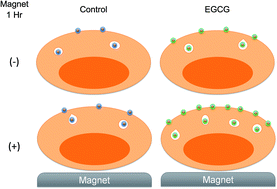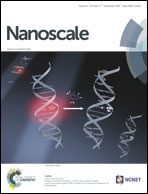Augmented cellular uptake of nanoparticles using tea catechins: effect of surface modification on nanoparticle–cell interaction
Abstract
Nanoparticles may serve as carriers in targeted therapeutics; interaction of the nanoparticles with a biological system may determine their targeting effects and therapeutic efficacy. Epigallocatechin-3-gallate (EGCG), a major component of tea catechins, has been conjugated with nanoparticles and tested as an anticancer agent. We investigated whether EGCG may enhance nanoparticle uptake by tumor cells. Cellular uptake of a dextran-coated magnetic nanoparticle (MNP) was determined by confocal microscopy, flow cytometry or a potassium thiocyanate colorimetric method. We demonstrated that EGCG greatly enhanced interaction and/or internalization of MNPs (with or without polyethylene glycol) by glioma cells, but not vascular endothelial cells. The enhancing effects are both time- and concentration-dependent. Such effects may be induced by a simple mix of MNPs with EGCG at a concentration as low as 1–3 μM, which increased MNP uptake 2- to 7-fold. In addition, application of magnetic force further potentiated MNP uptake, suggesting a synergetic effect of EGCG and magnetic force. Because the effects of EGCG were preserved at 4 °C, but not when EGCG was removed from the culture medium prior to addition of MNPs, a direct interaction of EGCG and MNPs was implicated. Use of an MNP–EGCG composite produced by adsorption of EGCG and magnetic separation also led to an enhanced uptake. The results reveal a novel interaction of a food component and nanocarrier system, which may be potentially amenable to magnetofection, cell labeling/tracing, and targeted therapeutics.


 Please wait while we load your content...
Please wait while we load your content...